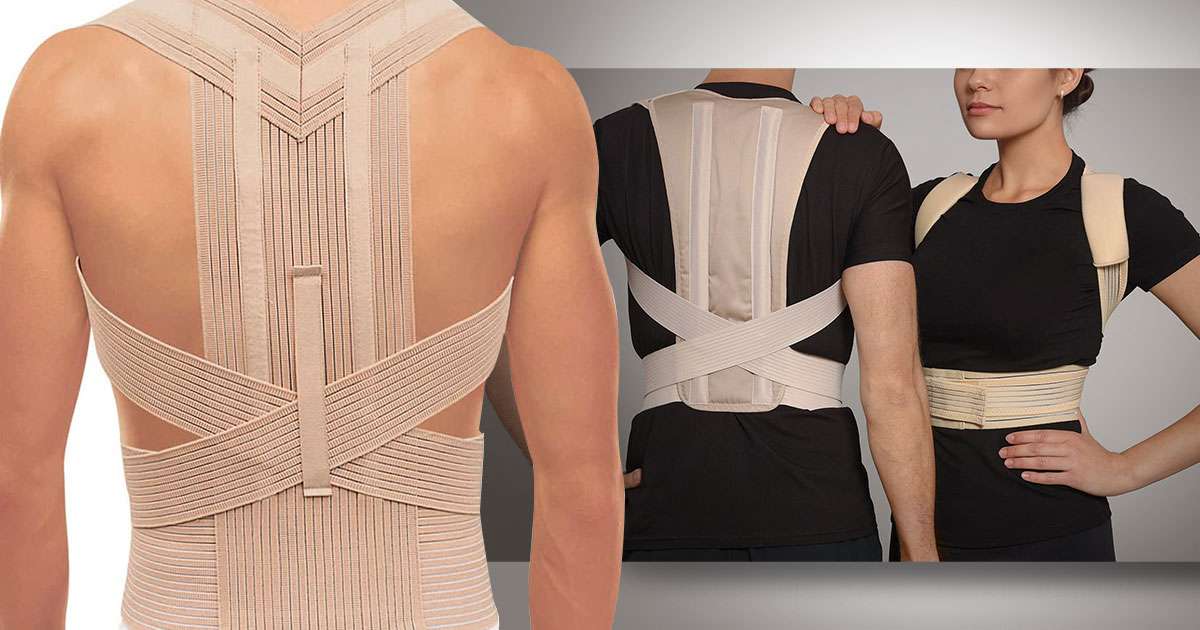Do Posture Correctors Work and Are They Safe?

Many of us spend lots of time sitting at computers or scrolling on our phones, which can lead to bad posture and pain in our neck, back, and shoulders. This happens because our bodies naturally take the easiest position, often causing us to slouch. To help with this, you might consider using a posture corrector. These come in various forms, like braces or special straps, some even use vibrations or alarms to remind you to sit up straight. However, do posture correctors work?
How Posture Correctors Work
Posture correctors are designed to help with muscle imbalances caused by spending too much time in unhealthy positions. They target tight chest muscles and stretched upper back muscles, guiding them to work better. This process, called proprioception, helps your body understand where it should be without you having to think about it. Correctors improve this sense, making you more aware of good posture and reminding you to adjust if you start slouching.
Is it OK to wear a posture corrector all day?
Although posture correctors are good for your back, professionals suggest limiting their use to only a few hours per day. It’s a bit like wearing training wheels on a bike. They help you balance at first, but if you never take them off, you might never learn to ride without them. When you rely on them too much, your body might forget how to stand straight on its own. It’s like having a safety net, but you don’t want to depend on it so much that you can’t stand tall without it.
Remember, don’t rely on a posture corrector forever. There’s no set time on how long you’ll need it, but once you start seeing yourself with better posture, you can say goodbye to it. And it’s best to use these gadgets along with exercises. The idea is to teach your body how it feels to stand straight and to make those muscles stronger. The goal is to be more aware of your body and gently guide it into a better position. By wearing the posture corrector during exercises, you’re training your body to use those muscles naturally later on.
Plus, if your back hurts and you think fixing your posture will help, it might not be the solution. Studies haven’t found a strong link between bad posture and pain. Instead of relying on a posture corrector, it’s better to see a doctor or physical therapist. They can figure out if there’s something else causing your pain, like muscle weakness or stiffness. Plus, they can give you tips for sitting at your desk more comfortably if that’s where you spend a lot of time.
How to Choose a Posture Corrector
There’s not much information on which type of posture corrector is the absolute best. But if you use one correctly during your day-to-day activities (don’t wear it to bed, though!), it could help. If you’re thinking of trying one, here are some tips to keep in mind:
- Type: There are different types of posture correctors for different parts of your body: shoulders, upper back, and lower back. To figure out which one you need, check your posture from your waist up. If your back is arching too much, try a corrector with lumbar support. If your shoulders are hunching or your neck is leaning forward, look for one that keeps your shoulders back. If you’re unsure, it’s a good idea to see a physical therapist for guidance on which one fits your needs best.
- Comfort: Look for a posture corrector made of breathable material that feels nice against your skin and doesn’t rub or irritate. It shouldn’t force your body into weird positions or feel too tight. Remember, if it’s not comfy, you won’t want to wear it, and then it won’t help you.
- Ease of use: You don’t need something super complicated. Look for a posture corrector that’s easy to use. You should be able to put it on, adjust it, and take it off all by yourself without needing someone else’s help to fiddle with straps or remove it.
- Obscurity: Check how it looks under your clothes. You probably want your posture corrector to be hidden.
- Price: Posture correctors with tech features usually cost more.
Alternative Ways to Improve Your Posture
- Exercise regularly, even just 30 minutes a day, to keep your body active and flexible.
- Lie down flat on the ground for a few minutes daily without any support to relax your body.
- Spend 10 minutes each day stretching to help your posture.
- Try gentle activities like yoga or Pilates to strengthen your back and stomach muscles, which can improve your posture.
- Stand up straight by straightening your spine and gently tightening your stomach muscles.
- Do simple head movements to loosen tight neck muscles.
- Wear flat, well-fitting shoes for balanced weight distribution.
- Remember to lift using your hips, knees, and thighs, not your back.
- Try gentle activities like yoga or Pilates to strengthen your back and stomach muscles, which can improve your posture.
Improve Your Posture with the Proper Devices and Practices
To improve your posture and alleviate pain from long hours of sitting, consider using a posture corrector wisely. These gadgets can help, but don’t rely on them entirely. Combine their use with exercises to strengthen your muscles and increase awareness of your body. Remember, posture correctors are like training wheels—they’re helpful at first, but aim to stand tall on your own eventually. Be mindful of their limitations and consult a professional if pain persists. Choose a comfortable and discreet corrector that suits your needs. Make small adjustments in your daily routine to prioritize your spinal health.

